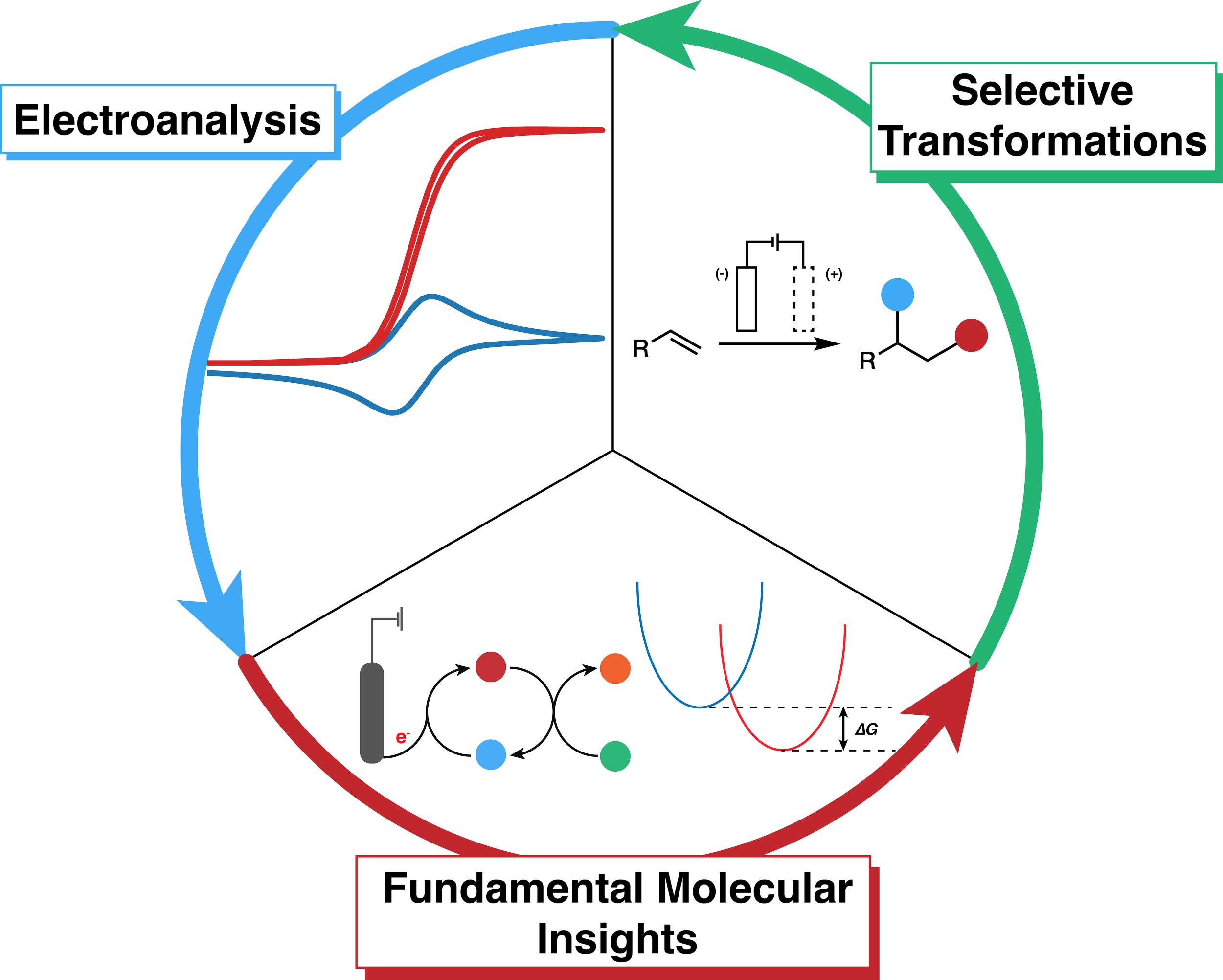How do we enabled selective electrochemical transformations?
The design of new and useful electrochemical reactions is enabled by powerful electroanalytical measurements and the molecular insights they provide.
Photo-driven Electrocatalysis
The co-localization of photons and electrons on a single reaction center has significant potential in the activation of inert bonds in synthetic methods, but directing selectivity remains a challenge. Here, we seek to combine electrocatalytic and photochemical methods to drive deeply reducing/oxidizing reactions and to promote homolysis of short lived intermediates. In addition to the synthetic applications, we will develop new electroanalytical tools and models to investigate these reactions in depth.
Interfacial Design for Electrocatalysis
Despite the rise in electrosynthetic methods, there has been little focus on designing heterogeneous electrocatalysts. Typical organic electrosynthetic methods focus on generating reactive intermediates through outer-sphere electron transfer, treating the electrode merely as an electron source or sink and overlooking the complex chemical nature of the electrode interface. Here, we seek to leverage modern surface science and materials approaches to provide selectivity in organic electrosynthesis. By understanding the electrode interface and double-layer structure at a molecular level, we will unlock new levels of control over surface-confined, electrochemically driven organic reactivity.
Non-Native Enzymatic Electrocatalysis
Enzymatic catalysts carry out organic transformations with high regio-, chemo-, and enantioselectivity. Because of this high selectivity, enzymes are an attractive option for organic synthesis, which demands selectivity in chemical reactions amidst a high degree of molecular complexity. Redox active enzymes (oxidoreductases) have emerged as a popular biocatalytic platform due their broad substrate scopes and useful reactivity. Our aim is to use electrochemical methods to drive redox reactivity and screen enzymatic catalysts for exciting new reactivity We will also use and develop electroanalytical methods to understand these new reactions at a molecular level.



